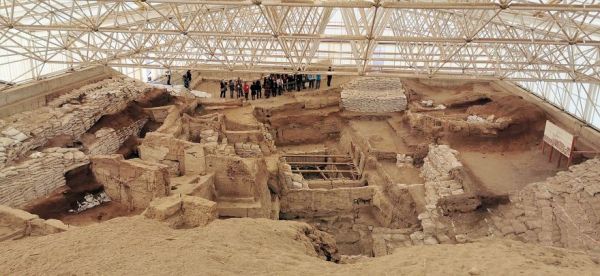
Archaeologists have long studied remnants of ancient cities that arose and then were suddenly abandoned, which happened over and over before civilization got a real toehold. It appears to have happened every couple of thousand years. Çatalhöyük in Turkey is the oldest farming community yet discovered, dating back more than 9,000 years, where the houses were so densely packed that people entered through the roofs. It was abandoned fairly suddenly in 6,000 BCE. By 4,000 BCE, other cities grew up in what is now Ukraine, but were abandoned a thousand years later.
The layouts of these cities and others show that in each iteration, people became somewhat more distanced from their neighbors. Could these communities have been abandoned because of communicable diseases? Could they have been bad enough to give up city living for a millennium? Scientists have found DNA from some diseases, and are running simulations to test their hypothesis about city density and disease in shaping the beginning of civilization, and you can read about it at the Conversation. -via Damn Interesting
(Image credit: Murat Özsoy 1958)






Commenting on Neatorama will earn you NeatoPoints!